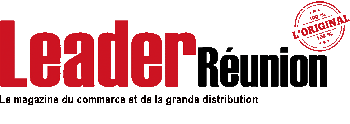Michel Perrinet, president of Octave, software publisher dedicated to retail and e-commerce players, develops the five retail trends that will mark the year 2021.
After a year 2020 marked by the health crisis and successive confinements which led to the closure of most physical stores and the adoption of new modes of consumption, it is interesting to ask, in the first days of this new year 2021, what are the trends that will mark the retail landscape in the months to come. Five trends seem essential to Michel Perrinet, president of Octave, company that has been working for 20 years on the digitalization of commerce (200 clients), located in Angers, in Maine-et-Loire. A : very strong growth for omnichannel players. While the final act of purchase will always be carried out mainly in physical stores, the future is for marketplaces and retailers on the web. Companies that have not chosen omnichannel and digital channels will face a stronger market contraction. According to the study carried out by Google in partnership with Euromonitor dating from September 2020, multi-channel models and marketplaces will drive 86% of sales growth over the next five years. Of them : the basics of unified commerce. Click&Collect, ship from store, drive… the 2020 context has highlighted omnichannel purchasing methods which, if they are normal in the minds of consumers, may have sometimes been lacking for certain brands, lack of a suitable information system. The stake for these, and there are many, is to focus on the basics of unified commerce, more than seeking innovation at all costs.
A service economy
Three : create link. Versatile and volatile, consumers have pushed brands to adapt to new consumption practices, mixing digital and traditional relationships in physical stores. The unprecedented context of 2020 has only confirmed new customer expectations. Where we were in a logic of distribution and sale of products, we are now in an economy of services and experiences. Developing a differentiating and broader service offer for the benefit of simplifying and improving customer relations has become essential for anyone who wants to capture the attention of consumers and retain them. Among the most important elements expected by consumers, the need for quality service comes second (20 %), just after the ability to offer products anywhere and at any time (21 % )(source : Google/Euromonitor study September 2020).
Four : the open-ended seller. If the omnichannel buying journey affects the product as such, more and more, consumers want a special relationship with the brand, or even with their sales advisor. The need to establish a bond of trust and to benefit from a quality of advice are the two main causes. This is manifested by the possibility of keeping a single point of contact throughout the purchasing process., online and offline. We can first discuss on social networks or via a chat with the same seller who will be found the next day in store. The latter can also broadcast online and from the store his own opinions on the products that he puts on the shelves and that he has tested himself. A practice known as “increased seller” which has notably been set up in the Cultura Belgium network.
Rental and second hand
Five : responsible purchasing and circular economy. By conviction or by necessity, the consumer is more and more attentive to his way of consuming. Second-hand rental or purchase, examples are multiplying. Decathlon is currently testing the rental of almost all of its product range in Belgium.. Promod launched its own vide-dressing site, offering its customers the possibility of opting for vouchers to be used in its network. The opportunity for the brand to recreate links and generate a new buying cycle. All sectors combined, the second-hand market is growing at 12% per year (source : ZoneBourse.com). And when we know that in 2020, one in three online shoppers has made a second-hand purchase (source : Foxintelligence), there is no doubt that many brands will be looking into the subject this year.












